|

|
 |

|
 |
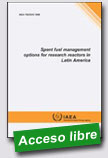 |
Spent Fuel Management
Options for Research Reactors in Latin America
IAEA
TECDOC Series No. 1508, June 2006, 88 p.
Research
reactors operate in many IAEA Member States
for
radioisotope production, fundamental research in physics
and biology, materials irradiation, education and
training. This publication arises from an IAEA Technical
Cooperation Regional Project developed by Latin American
experts on research reactor spent fuel management. The
publication describes technically feasible options
available for |
|
management
of spent fuel from research reactors in the
participating Member States (Argentina, Brazil, Chile,
Peru and Mexico) and these options are presented within
the context of the economic considerations of the
countries in question.
Extraído
de:
http://www-pub.iaea.org/MTCD/publications/PDF/te_1508_web.pdf
http://www-pub.iaea.org/MTCD/publications/PDF/te_1508_web.pdf
|
 |
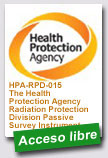 |
The
Health Protection Agency Radiation Protection Division
Passive Survey Instrument
Health Protection Agency, UK,
August 2006, 14 p.
Aircraft
crew and frequent flyers are exposed to elevated levels
of cosmic radiation of galactic and solar origin and
secondary radiation produced in the atmosphere, the
aircraft structure and its contents. Following
recommendations from the International Commission on
Radiological Protection, the European Union (EU)
introduced a revised Basic Safety Standards Directive
which included exposure to
|
|
natural
sources of ionising radiation, including cosmic
radiation, as occupational exposure. The revised
Directive has been incorporated into laws and
regulations in the EU member states. Where the
assessment of the occupational exposure of aircraft crew
is necessary, the preferred approach to monitoring is by
the recording of staff flying times and calculated route
doses. However there is a requirement to validate
calculations periodically by measurement.
The Radiation Protection Division of the HPA has
developed a passive survey instrument to make these
measurements. The instrument consists of a box
containing 36 etched track detectors and 30
thermoluminescence dosemeters (TLDs), and 2 electronic
personal dosemeters (EPDs) to record the time profile of
the radiation field. Two boxes are prepared for each
measurement, one as a background control. The
measurement approach adopted is to determine separately
the non-neutron component and the neutron component,
which includes neutron-like dose equivalent contribution
by high-energy protons. The 15% determination limit
(that is the dose which can be determined with a 15%
precision) is 100 μSv for the estimation of total
ambient dose equivalent. This means that, in general,
several return flights are required to make a
measurement of acceptable precision.
extraído de:
http://www.hpa.org.uk/radiation/publications/hpa_rpd_reports/2006/hpa_rpd_015.htm
http://www.hpa.org.uk/radiation/publications/hpa_rpd_reports/2006/hpa_rpd_015.pdf |
 |
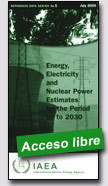 |
Energy,
Electricity and Nuclear Power Estimates for the Period
up to 2030 July 2006
IAEA
Reference Data Series No. 1, 2006, 53 p.
This
annual publication contains estimates of energy,
electricity and nuclear power trends up to the year
2030, using a variety of sources, such as the IAEA's
Power Reactor Information System and data prepared by
the United Nations. |
|
extraído
de:
http://www-pub.iaea.org/MTCD/publications/PubDetails.asp?pubId=7555
http://www-pub.iaea.org/MTCD/publications/PDF/RDS1-26_web.pdf
|
 |
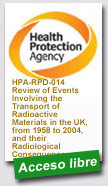 |
Review
of Events Involving the Transport of Radioactive
Materials in the UK, from 1958 to 2004, and their
Radiological Consequences
Health
Protection Agency, UK, July 2006, 46 p.
Radioactive materials are widely used in hospitals,
industry and research. It is necessary for these
materials to be transported from suppliers to customers,
and for some radioactive wastes to be returned from
customers to suppliers or to waste facilities. All these
materials are normally transported by road. Radioactive
materials associated with the nuclear industry are
mainly
|
|
moved by rail. Also, exports and imports of
radioactive materials are made by sea and air. During
these shipments events, or accidents and
incidents, can occur. Records of these events are
collated and held on the Radioactive Material Transport
Event Database (RAMTED). The database contains
information on over 800 events that occurred during the
period 1958 to 2004. In this study these events were
reviewed to examine trends and radiological
consequences. The most serious radiological consequences
occurred as a result of transporting improperly packaged
industrial radiography sources. However, these events
are historical, as there has not been such an occurrence
for two decades. The analysis of the information in the
database provides an overview of the types of events
that have featured throughout the period covered.
extraído de:
http://www.hpa.org.uk/radiation/publications/hpa_rpd_reports/2006/hpa_rpd_014.htm
http://www.hpa.org.uk/radiation/publications/hpa_rpd_reports/2006/hpa_rpd_014.pdf
|
 |
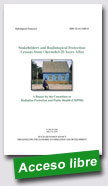 |
Stakeholders
and Radiological Protection: Lessons from Chernobyl 20
Years After
Nuclear
Energy Agency, 2006, 88 p.
The present report, published
20 years after the accident at Chernobyl builds on,
amongst other things, the lessons lernt from the ETHOS
project and th Co-operation for Rehabilitation (CORE)
Programme. It describes how radiation prtotection has
been adapted to meet the needs of people still affected
by the accident or, in some cases, the lessons learnt
from this. The report strives to demonstrate how a
technical discipline, such as |
|
radiation protection, can
adjust to be more effective in meeting the needs od
ordinary peopleforced to live in extraordinary
circumstances. As such, this report goes beyond
supporting the work of the Committee and will also be
stimulating reading for anyone with the interest in
planning for emergences involving widespread
contamination and their aftermath.
extraído
de:
http://www.nea.fr/html/rp/reports/2006/nea6170-chernobyl-rp.pdf
|
 |
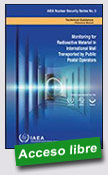 |
Monitoring
for Radioactive Material in International Mail
Transported by Public Postal Operators Technical
Guidance
IAEA, 2006, 39 p.
The illegal transport of conventional explosives and
biological material has been observed in public mail and
could lead to serious health hazards. In response to
Member States' requests to establish guidance for
detecting the movement of radioactive material in
international mail, the IAEA and the Universal Postal
Union (UPU) undertook a joint effort |
|
to prepare this publication. It considers how
radioactive materials in international mail might be
detected, how best to monitor for these materials in
mail facilities and how to respond appropriately. This
publication brings together a concise but comprehensive
description of the various techniques and equipment used
to detect and control radioactive material during mail
processing.
extraído
de:
http://www-pub.iaea.org/MTCD/publications/PubDetails.asp?pubId=7402
|
 |
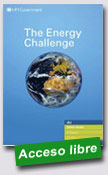 |
UK
- The Energy Challenge – Energy Review Report 2006
UK Department of Trade and
Industry, 11 July 2006, 218 p.
Including supporting documentation.
This work aims to put us in a
position to meet the two major long-term challenges in
UK energy policy: 1) we need to tackle climate change by
reducing carbon dioxide emissions; and 2) we need to
deliver secure, clean energy at affordable prices, as we
move to increasing dependence on imported energy. The
remit of the Review was to examine |
|
the UK's progress against the
medium and long-term 2003 Energy White Paper goals and
consider options for further steps to achieve them. We
remain committed to the UK's competitive energy market
as the best way to deliver secure energy supplies and
competitive prices. Our aim is to set the right
regulatory framework to enable the market to move in the
right direction to meet the long-term challenges.
extraído de:
http://www.dti.gov.uk/energy/review/page31995.html
|
 |
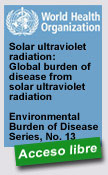 |
Solar
ultraviolet radiation: Global burden of disease from
solar ultraviolet radiation
World
Health Organization, 2006, 258 p.
Human exposure to solar ultraviolet radiation has
important public health implications. Evidence of harm
associated with overexposure to UV has been demonstrated
in many studies. Skin cancer and malignant melanoma are
among the most severe health effects, but a series of
other health effects have been identified. The current
report provides a quantification of the global disease
burden
|
|
associated with UV. The information presented forms a
knowledge base for the prevention of adverse effects of
UV exposure that is achievable with known and accessible
interventions. UV prevention focuses on protecting the
skin and other organs from UV radiation. On the other
hand, a moderate degree of UV exposure is necessary for
the production of Vitamin D which is essential for bone
health. Additionally, evidence emerges that low Vitamin
D levels are likely to be associated with other chronic
diseases. Thus, public health policy on ultraviolet
radiation needs to aim at preventing the disease burden
associated both with excessive and with insufficient UV
exposure.
extraído de:
http://www.who.int/uv/publications/solaradgbd/en/index.html
http://www.who.int/entity/uv/health/solaruvradfull_180706.pdf |
 |
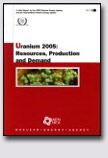 |
Uranium
2005 - Resources, Production and Demand
OECD,
International Atomic Energy Agency (IAEA), 2 June 2006,
388 p.
Published every other year, Uranium Resources,
Production, and Demand, or the “Red Book” as it is
commonly known, is jointly prepared by the OECD Nuclear
Energy Agency and the International Atomic Energy
Agency. It is the recognised world reference on uranium
and is based on official information
|
|
received from 43
countries. This 21st edition presents the results of a
thorough review of world
uranium supplies and demand as of 1st January 2005 and
provides a statistical profile of the world uranium
industry in the areas of exploration, resource
estimates, production and reactor-related requirements.
It provides substantial new information from all major
uranium production centres in Africa, Australia, Central
Asia, Eastern Europe and North America. Projections of
nuclear generating capacity and reactor-related uranium
requirements through 2025 are provided as well as a
discussion of long-term uranium supply and demand
issues. This edition focuses on recent price and
production increases that could signal major changes in
the industry.
extraído de:
http://www.oecdbookshop.org/oecd/display.asp?tag=
XOPD88XX4X3829291CY9NZ&sf1=identifiers&st1=662006031P1 |
|
|
|
|
|
|
|
|
|
|
